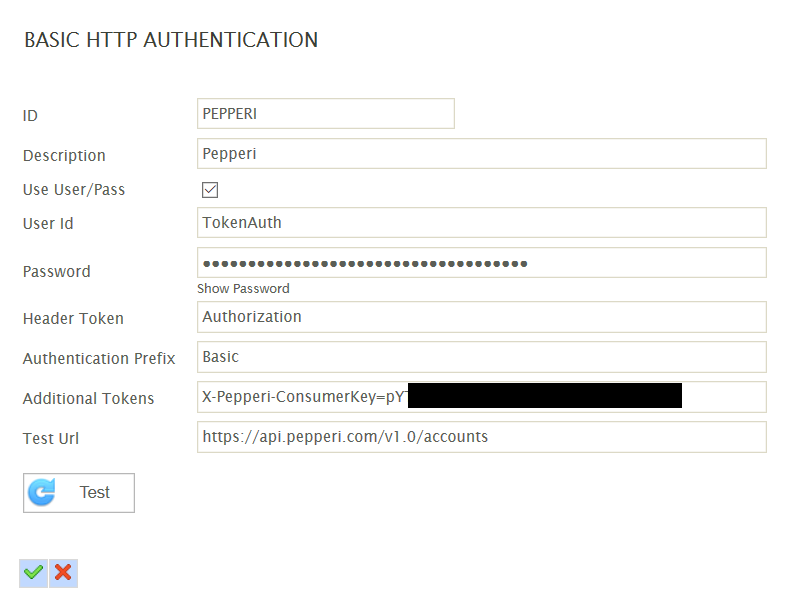Basic Authentication
Defines the authentication details to authorise to a webservice authenticating with Basic Authentication.
The Basic Authentication can be used for any simple HTTP header based authentication. The authentication can pass a base-64 encoded HTTP token in addition to additional header tokens.

ID
The id of the Basic Authentication
Description
A friendly description of the authentication.
Use User/Pass
When selected the user id, password, and prefix will be sent as a header to the webservice. Deselecting this will mean the header will not be sent.
User Id
The user name to authenticate with.
Password
The corresponding password to User Id field.
Header Token
The token in the HTTP request header identifying the base 64 encoded user/password string. In most scenarios the basic authentication hash is identified with the value of ‘Authorization’, however some webservices may require an alternative header token.
Authentication Prefix
This is text string preceding the base 64 encoded username and password. Typically this should be left as the default of ‘Basic’
Additional Tokens
Additional header tokens may be required to authenticate. Where this is the case they can be specified here in the form of:
token=tokenvalue
Separate each token name and value pair with a semi-colon ';' if multiple tokens need to be specified.
token1=tokenvalue1;token2=tokenvalue2;
Test Url
The URL used when the test function is invoked. This Url should expect a GET request, otherwise an error may be reported even when the authentication succeeds.
Test Button
Will test the supplied details can successfully authenticate using the Test Url.